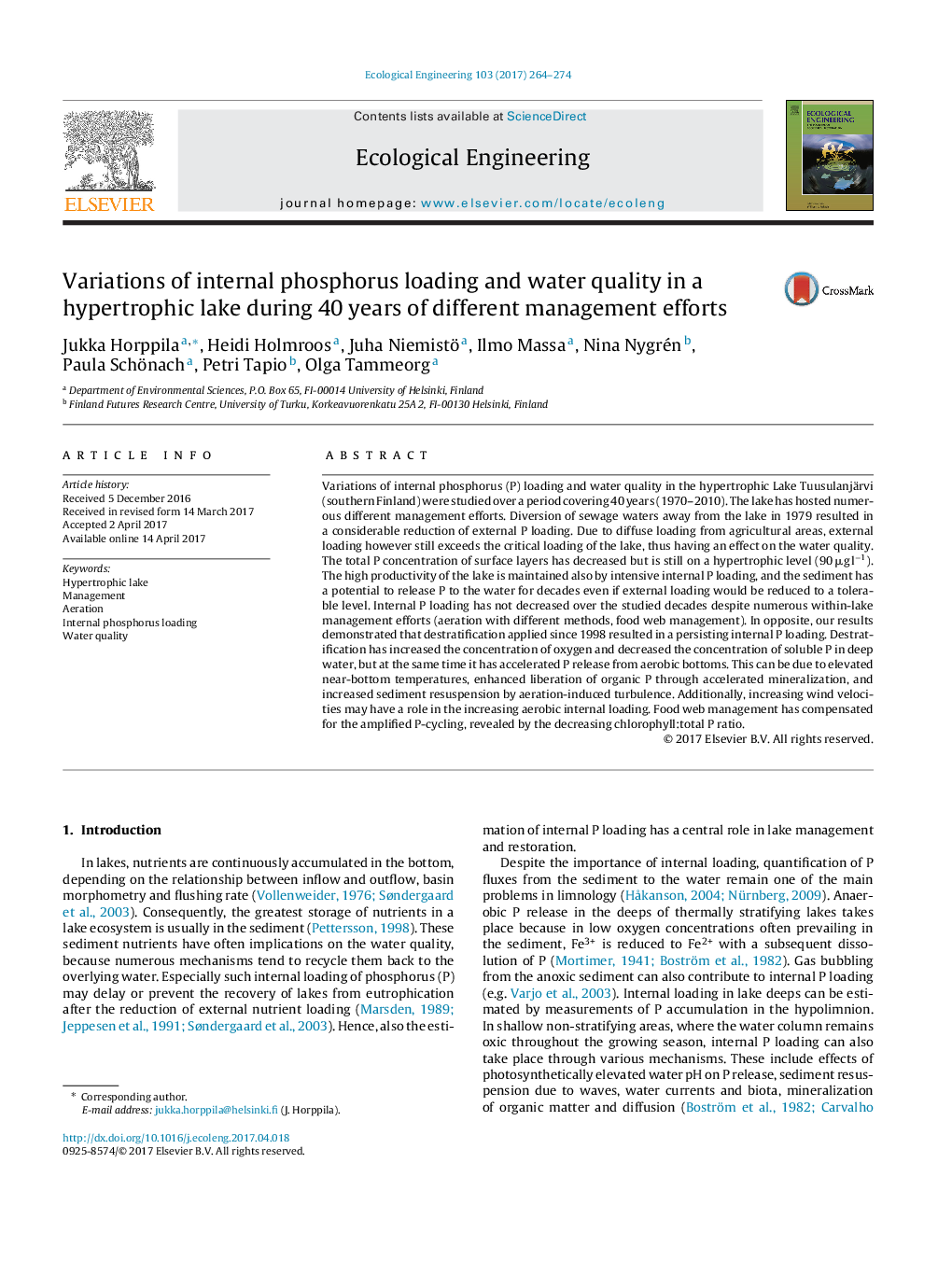| Article ID | Journal | Published Year | Pages | File Type |
|---|---|---|---|---|
| 5743586 | Ecological Engineering | 2017 | 11 Pages |
Variations of internal phosphorus (P) loading and water quality in the hypertrophic Lake Tuusulanjärvi (southern Finland) were studied over a period covering 40 years (1970-2010). The lake has hosted numerous different management efforts. Diversion of sewage waters away from the lake in 1979 resulted in a considerable reduction of external P loading. Due to diffuse loading from agricultural areas, external loading however still exceeds the critical loading of the lake, thus having an effect on the water quality. The total P concentration of surface layers has decreased but is still on a hypertrophic level (90 μg lâ1). The high productivity of the lake is maintained also by intensive internal P loading, and the sediment has a potential to release P to the water for decades even if external loading would be reduced to a tolerable level. Internal P loading has not decreased over the studied decades despite numerous within-lake management efforts (aeration with different methods, food web management). In opposite, our results demonstrated that destratification applied since 1998 resulted in a persisting internal P loading. Destratification has increased the concentration of oxygen and decreased the concentration of soluble P in deep water, but at the same time it has accelerated P release from aerobic bottoms. This can be due to elevated near-bottom temperatures, enhanced liberation of organic P through accelerated mineralization, and increased sediment resuspension by aeration-induced turbulence. Additionally, increasing wind velocities may have a role in the increasing aerobic internal loading. Food web management has compensated for the amplified P-cycling, revealed by the decreasing chlorophyll:total P ratio.
